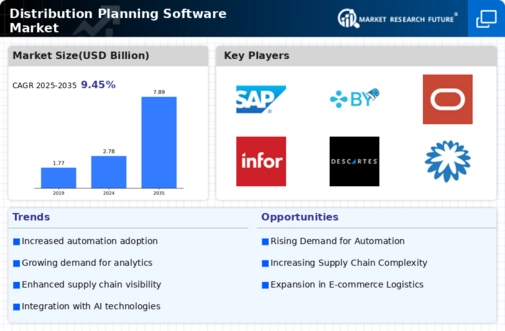Distribution Planning Software Market Summary
The Global Distribution Planning Software Market is projected to grow significantly from 2.92 USD Billion in 2024 to 7.90 USD Billion by 2035.
Key Market Trends & Highlights
Distribution Planning Software Key Trends and Highlights
- The market is expected to expand at a compound annual growth rate (CAGR) of 9.95 percent from 2025 to 2035.
- By 2035, the market valuation is anticipated to reach 7.89 USD Billion, indicating robust growth potential.
- in 2024, the market is valued at 2.92 USD Billion, reflecting a strong foundation for future expansion.
- Growing adoption of advanced analytics due to increased demand for operational efficiency is a major market driver.
Market Size & Forecast
| 2024 Market Size | 2.92 (USD Billion) |
| 2035 Market Size | 7.90 (USD Billion) |
| CAGR (2025-2035) | 9.45% |
Major Players
SAP SE, Blue Yonder, Oracle, JDA Software, Infor, Descartes Systems Group, Llamasoft, Flexsim, Zetes, Kinaxis, Manhattan Associates, OptTek Systems, Logility, Simio LLC
























Leave a Comment